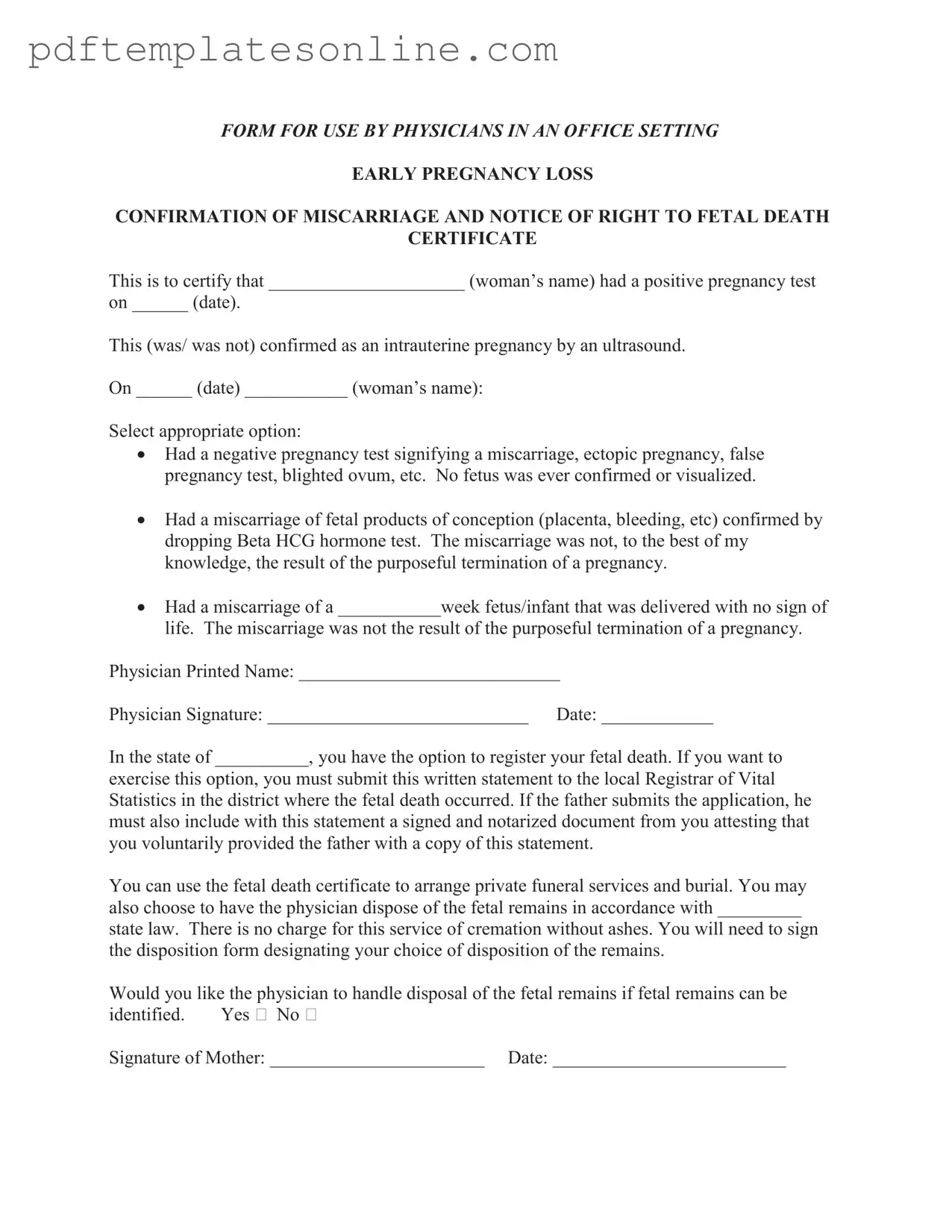Blank Miscarriage Discharge Paper Form
The Miscarriage Discharge Paper form is a document used by physicians to confirm early pregnancy loss and provide necessary information regarding fetal death. This form certifies the details of the miscarriage and outlines the options available to the mother, including the right to register a fetal death certificate. Understanding this form can help individuals navigate the emotional and legal aspects of a miscarriage.
Access Miscarriage Discharge Paper Editor Now
